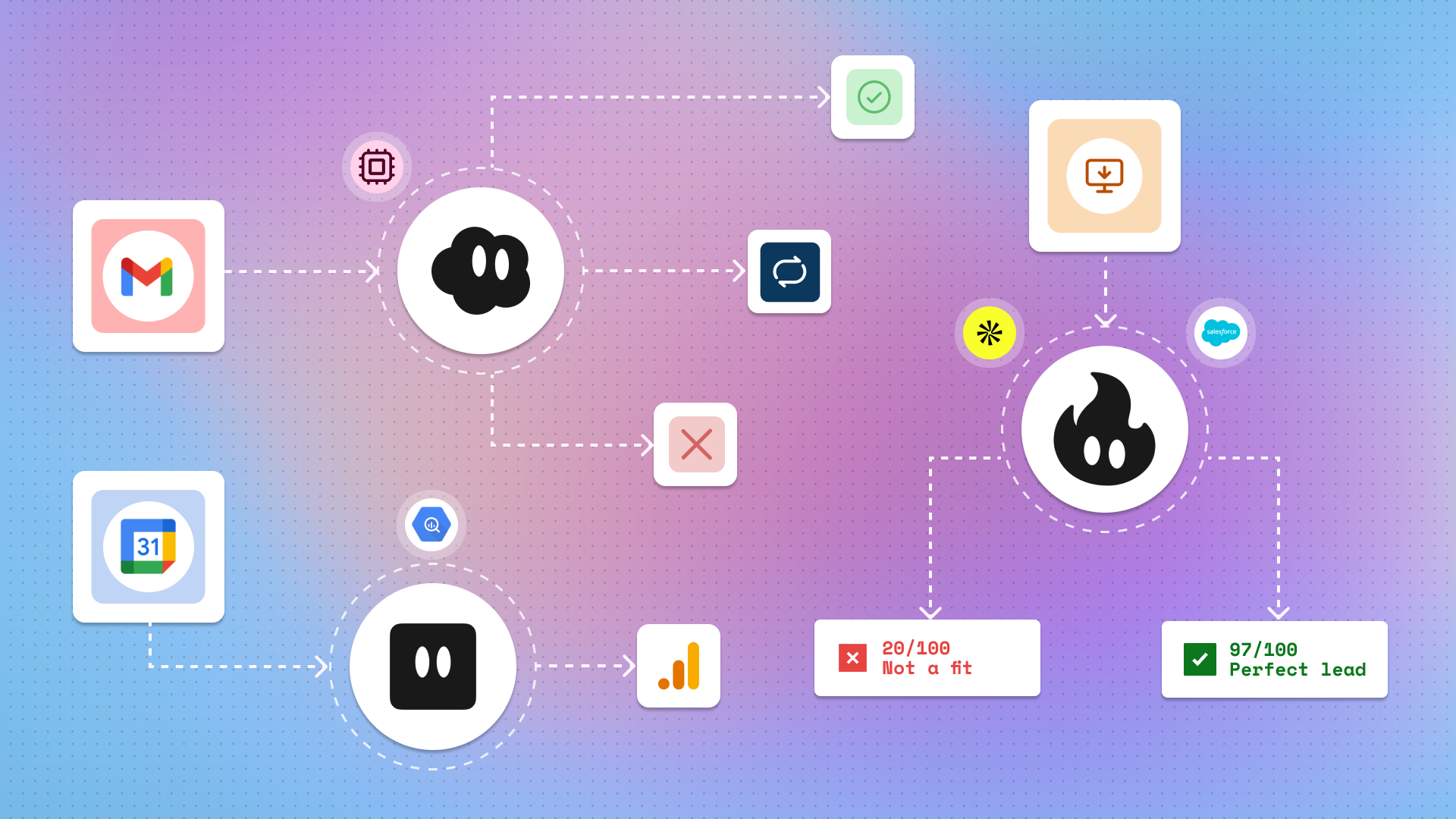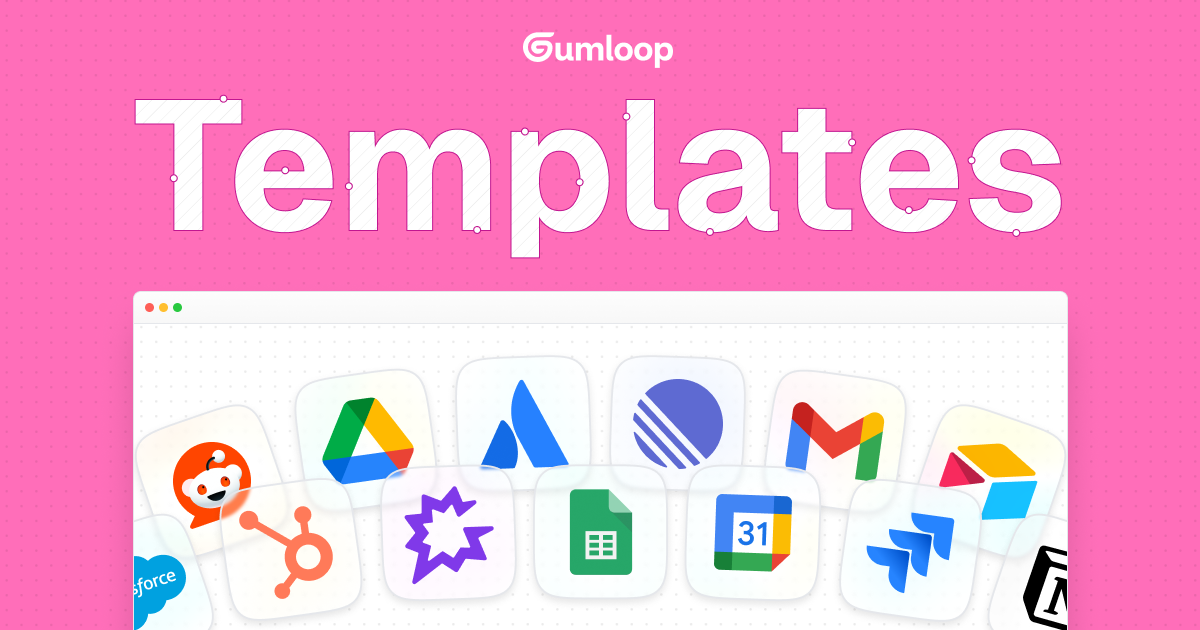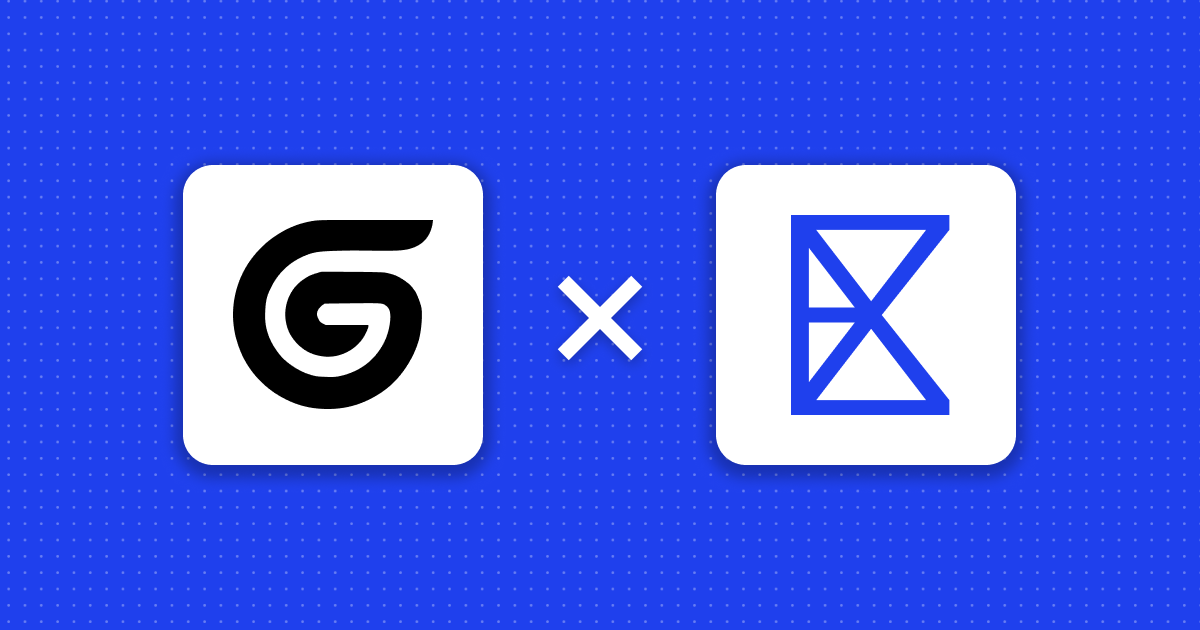Announcing Gumloop Agents

Build custom agents armed with MCP, Gumloop workflows, and system context, in seconds.
Gumloop agents are coming out of beta today.
Agents are AI-powered reasoning engines that can use tools to solve open-ended tasks. We’ve spoken about the difference between agents and workflows before, but we’ve always thought that you need to earn the right to build agents.
Great agents are built upon great workflows and you need to nail the workflows first. Agents come next: they’re the quarterbacks that can intelligently use your workflows to automate work.
What are Gumloop agents?
Users can build custom agents that are armed with MCP, Gumloop workflows and system context in seconds.
Ask your agent to do tasks, and it’ll intelligently figure out which tools to use, and string them together to get your tasks done. All agents are usable on the Gumloop platform or natively in Slack.
Fun fact: Gumloop agents are built on our existing copilot infrastructure. That means your Gumloop agents are powered by the same intelligence as the Gummie you chat with when building your Gumloop workflows. So, as we continue to improve Gummie and make it smarter, your agents will get smarter too!
How do agents work?
Setting up an agent only takes 3 easy steps:
- Create a new agent
- Connect the agent to tools (like MCP servers, or even other Gumloop workflows)
- Start chatting with your agent (in Gumloop or in Slack)
To create an agent, head to the Agents tab in your hub.
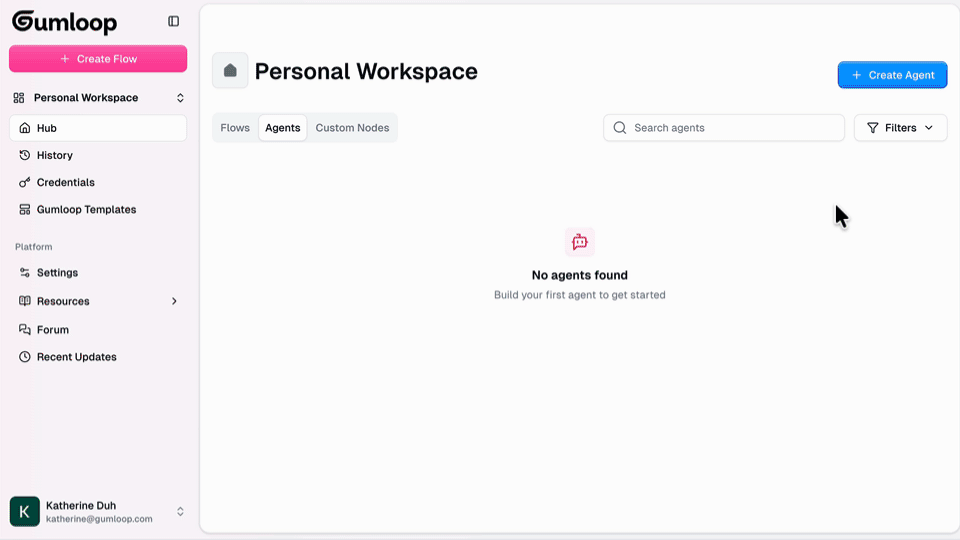
Once the agent is connected to the tools it needs, start chatting with it. You can chat with your agent either in Gumloop, or from inside Slack.
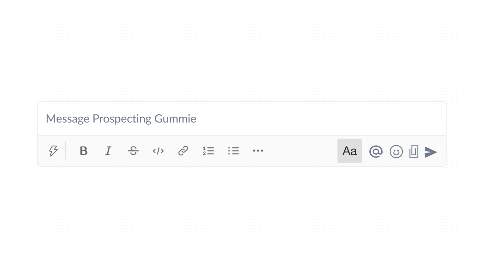
What can agents do?
An agent will take any task you give it and figure out how to leverage its tools to accomplish its goal. Let’s run through an example:
You created an agent with Apollo MCP, Gmail MCP and a complex Gumloop workflow that pulls internal data about customer activity from your servers and any Salesforce opportunities.
You can ask your agent, “Using this LinkedIn profile, figure out if they’re an active user and if they’ve been using our product in the last 5 days or are linked to an opportunity on Salesforce. Draft a simple message asking to grab coffee.”
- The agent will read your task and consider the system prompt it’s been provided
- It’ll use the Apollo MCP tool to find their email from the LinkedIn profile
- It’ll use your workflow to pull customer activity and Salesforce data
- If there is activity or an opportunity, it’ll use the Gmail tool to draft a message
- It’ll let you know when it’s done and explain its process step-by-step.
Agents are the ultimate interface to workflows and MCP. They reason through your problems and intelligently use the right tools at the right times. As of today, Gumloop users are transitioning from being the dispatchers of workflows to the dispatchers of agents.
How workflows and agents work together
Agents are flexible and can handle open-ended tasks, and they might not always handle the same task in the same way every single time. They’re great for solving complex problems on the fly.
On the other hand, if you’re trying to perform frequent, repeatable tasks at scale, or get predictable outputs, a workflow is probably what you’re looking for.
What makes Gumloop’s agents so special is that they can use your workflows — so you get the benefits of both agents and workflows.
Check out this video of an agent for sending outbound messages to YC companies. The agent uses MCP integrations with Apollo, Gmail, and Notion, plus Gumloop workflows for scraping the YC website.
With these tools together, you can make flexible, open-ended requests (e.g., only draft emails for edtech companies under 10 employees) while ensuring you’re always working from a predictable baseline (a comprehensive list of every YC company).
Why Slack is so important as the interface
We watched people use our preview release of Gumloop agents and noticed something major:
Some users had their agents do amazing things, but no one else on their team could see how they did it. Slack exposes that learning by default.
Build a marketing agent, add it to your team's marketing channel and automatically start learning the art of the possible by seeing people chat with the agents. Each thread is its own conversation.
Automatically have your entire company learn how to interface with agents.
How do I add agents to Slack?
Adding your agent to Slack takes less than a minute. Watch this video to learn how to do it.
How does authentication work?
Authentication for Gumloop agents works the same as it does for Gumloop workflows. Your Slack account is tied to your Gumloop account. When you ask an agent a question, it will use your personal credentials to ensure you have permission to run necessary tools and workflows.
If the agent has a tool that you’re not authenticated with yet (like Google Calendar), it’ll ask you to authenticate with it before proceeding.
Admin security controls still apply to agents as they do to workflows and user roles in general on Gumloop.
How can I get started with agents?
If you check out your agents hub right now, there are some example agents to help you get started.
We also have guided video tutorials on demand that you can watch right now.
Read related articles
Check out more articles on the Gumloop blog.
Create automations
you're proud of
Start automating for free in 30 seconds — then scale your
superhuman capabilities without limits.


















